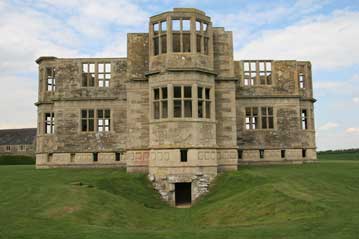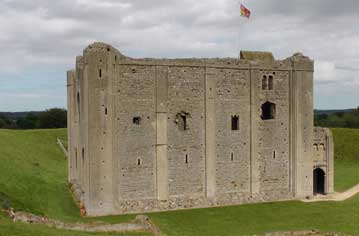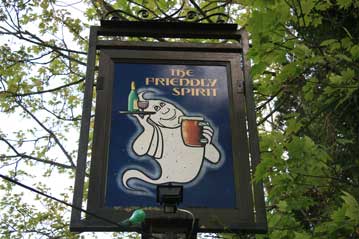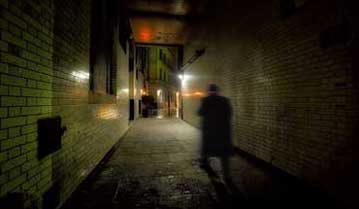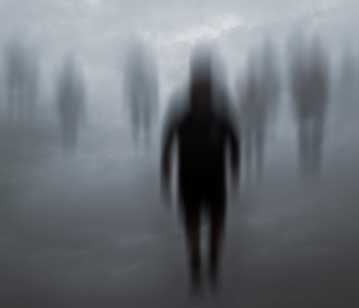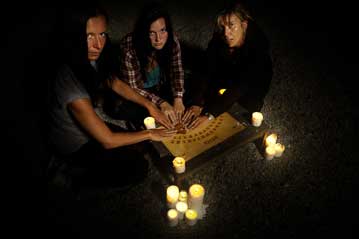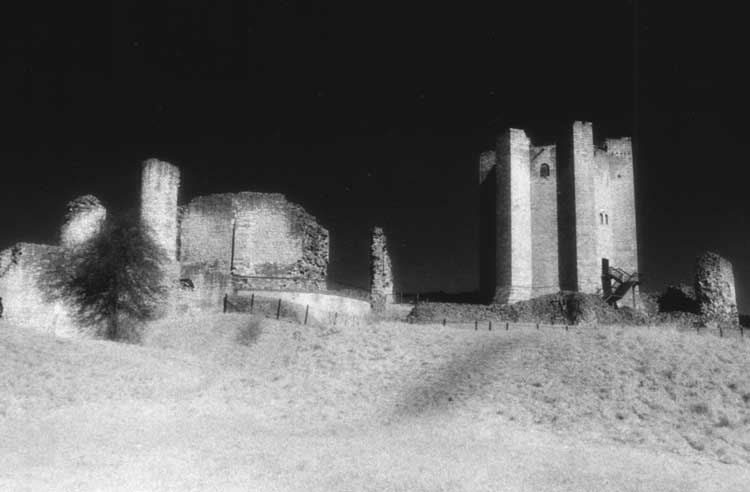
Towering Fortresses And Romantic Ruins
An aura of departed greatness hangs over Britain's haunted castles, many of which still dominate their surroundings, just as they have done for centuries, gazing down from their rocky thrones, their shattered walls reflecting past eras of grandeur and mystery.
Some of these haunted castles are crumbling vestiges, steeped in legend and imbued with the chivalric spirit of days long gone.
Others are mighty strongholds, built by powerful Norman nobles, from which past residents seem both unable and unwilling to depart.
There are sturdy, fortress-like homes upon the very fabric of which successive generations of great and powerful families have left indelible psychic imprints that, every so often, blink into life and provide astonished onlookers with spectral re-enactments of some long ago happening.
Ghosts From Every Era
Their ghosts belong to all ages and transcend the centuries, commemorating, as they do, deeds that were sometimes brave, other times infamous, occasionally mysterious, but always fascinating. Wicked spouses, fickle lovers, evil squires and gross miscarriages of justice abound, and provide glimpses back into a past when parts of Britain were remote and isolated regions, far removed from the refinements of civilised society.
It has been said that ghosts only appear in properties that have known either great happiness or great misery, and the haunted castles of Britain and Ireland most certainly fall into both categories.
It must have been with a great deal of pride that many owners gazed upon the soaring walls of their newly built strongholds.
Births, marriages and victory celebrations must have been joyous occasions during which the walls and chambers many a formidable bastion, must have echoed to the sound of merrymaking.
During times of war, the lord, his family and their garrison would retreat into their castle and attempt to repel their enemies, and we can only guess at the feelings of fear and revulsion that must have hung over a castle during a siege.
Subjugation And Oppression
But there is also a much darker side to the castles of Britain and Ireland, for the many of them were intended as tools of subjugation and were viewed with revulsion by many who lived under the yoke of oppression.
Nowhere is this more apparent than in Ireland where there are more castles than in the whole of England, Scotland and Wales combined. Indeed, between the late 1100’s and the early 1700’s over three thousand of them were constructed there.
Yet the majority of them were not built by the indigenous population but were built by invaders and oppressors. As a consequence, the numerous mouldering remnants and derelict piles that litter the landscape - both in the north and south - are often regarded as symbols of suppression, which is exactly what they were intended for.
Many of these abandoned fortresses are reputed to be haunted castles. They stand derelict in the middle of fields, or they balance precariously on the edges of cliffs. Some are squashed between or even incorporated into modern buildings. Others rot in the gardens of houses both great and small.
A sizeable number were burnt down in the early 1920’s, during the Irish struggle for independence.
A few of them have undergone tasteful restoration in recent years, others have been embellished, modernised and altered beyond recognition.
A Thousand Years Of Emotion
If, indeed, it is happiness and misery that bring ghosts back to a building, then the haunted castles of Ireland have almost a thousand years of such emotions crackling away within their ancient fabrics, and the Irish gift for story telling has imbued many of them with a rich array of phantoms.
It is a truly wonderful experience to be regaled with the tales of the ghosts that wander the haunted castles of Ireland by the current owners, several of whom offer spellbinding ghost tours of the fortresses they now call home.
Wales, The Land Of Castles
Similarly Wales was another land across which the yoke of oppression and subjugation cast its long shadow.
Wales is often called the "Land of Castles" and is home to some of Europe’s finest and most imposing medieval strongholds.
The most impressive are undoubtedly those that resulted from Edward 1st’s decision in 1276 to treat the indigenous Welsh princes as insurgents, and undertake an outright conquest using a series of strategically linked fortresses that would subdue the territory once and for all.
Thus began one of the biggest programmes of Castle building ever inaugurated by an English monarch, and the massive bastions that sprang up in its wake were intended to frighten the native Welsh into submission, end their hopes of nationalism forever, and provide them with a permanent reminder of who their true ruler was.
Many of those subjugating fortresses are still as impressive today as ever they were in the past, and the ghosts that roam those which are haunted castles testify to both the virulence of the times in which they were built, and of the centuries of unrest to which they have born silent witness.
Gaunt Ruins And Sturdy Towers
However, turmoil and strife have also left their mark on many of the haunted castles in the north of England.
Here, in the past, you would have found yourself in a wild frontier land that was the lawless domain of savage cattle stealers and ruthless warlords.
Consequently castle’s continued to be built here long after the need for them had diminished throughout the rest of England and Wales.
The memories of these unsettled times linger on in the gaunt ruins and sturdy towers that litter the landscape, and in the ghosts that might be encountered amongst the ragged vestiges of the north of England's haunted castles.
The Castle Ghosts Of Scotland
Of course, this was the frontier that faced Scotland and, crossing the border, you encounter a landscape across which the scars of a stormy past have been indelibly carved.
The ghosts that wander the timeworn corridors and historic rooms of Scotland’s haunted castles are perpetual reminders of this violent and stormy past.
A Blood-Spatterred Landscape
For centuries Scotland was a divided nation, and its history is spattered with the blood of countless conflicts, many of which were fought between the Highlanders and Lowlanders.
Nowhere is this more evident than in the number of ruined fortresses and massive stone castles that stud this mysterious and enchanting country.
From the bleak desolation of the border with England; through the gentle farmlands of the central Lowlands; and on to the awesome splendour of the country’s northwest corner, where wild and empty landscapes form Europe’s last great wilderness, Scotland boasts a stunning array of haunted castles.
Behind the sombre walls of these impressive bastions, Kings and Queens, Lairds and Ladies, Highlanders and Lowlanders, the famous and the long forgotten, continue to inhabit an ethereal domain where old feuds and differences have never died, and where dastardly deeds and ancient discords occasionally cross the centuries to baffle and astonish those who happen to stumble upon their ghostly re-enactments.
Haunted Castles Of the South
Heading back south of the border and on toward the south-east of England you encounter castles built for a variety of different reasons.
For centuries the southeast corner of England was the gateway through which passed successive waves of invaders. Celts, Romans, Saxons, Angles, Jutes, Vikings and Normans all passed this way.
Moving inland, they built fortresses to protect themselves against the next possible invaders, and remnants of their defences still lie scattered across the region.
From the towering walls of Dover Castle, that has commanded the road to London since the days of the Norman’s, to the sheer beauty of Scotney, Leeds, Hever and Bodiam, all of which are as romantic and tranquil castles as you could ever wish to find.
By contrast the soaring ramparts of Rochester Castle and the sprawling walls of Pevensey Castle were built for defence rather than for looks and they are still as awe inspiring today as ever they were in their stormy past.
And Into East Anglia
Similar reasons lie behind the building of the castles in the east of England. The eastern counties occupy the area that once formed the ancient Kingdom of East Anglia.
Bounded to the west by the swamps of the Fens; buffered to the east and north by the sea; and hemmed in at the south by the thick woodlands of Saxon Essex, it was for centuries an aloof and mysterious region, populated by a hardy, resourceful but also superstitious people.
But successive waves of invader did manage to breach its natural defences and Romans, Angles, Saxons, Vikings and Danes have all left their mark upon the landscape.
Likewise the more peaceful arrival of Icelandic fishermen, Flemish weavers and Dutch drainage specialists, has in turn left an imprint on the regions trades, skills and agriculture.
The ghosts that wander the haunted castles hereabouts testify to the changing demographics of the region, and their stories reflect the beliefs and cultures that successive waves of settlers have brought with them.
Demon hounds; tormented Royal wraiths and nebulous nobles all inhabit a spectral domain where myth and legend bond and infamous acts are often re-enacted before astonished witnesses by phantom protagonists.


